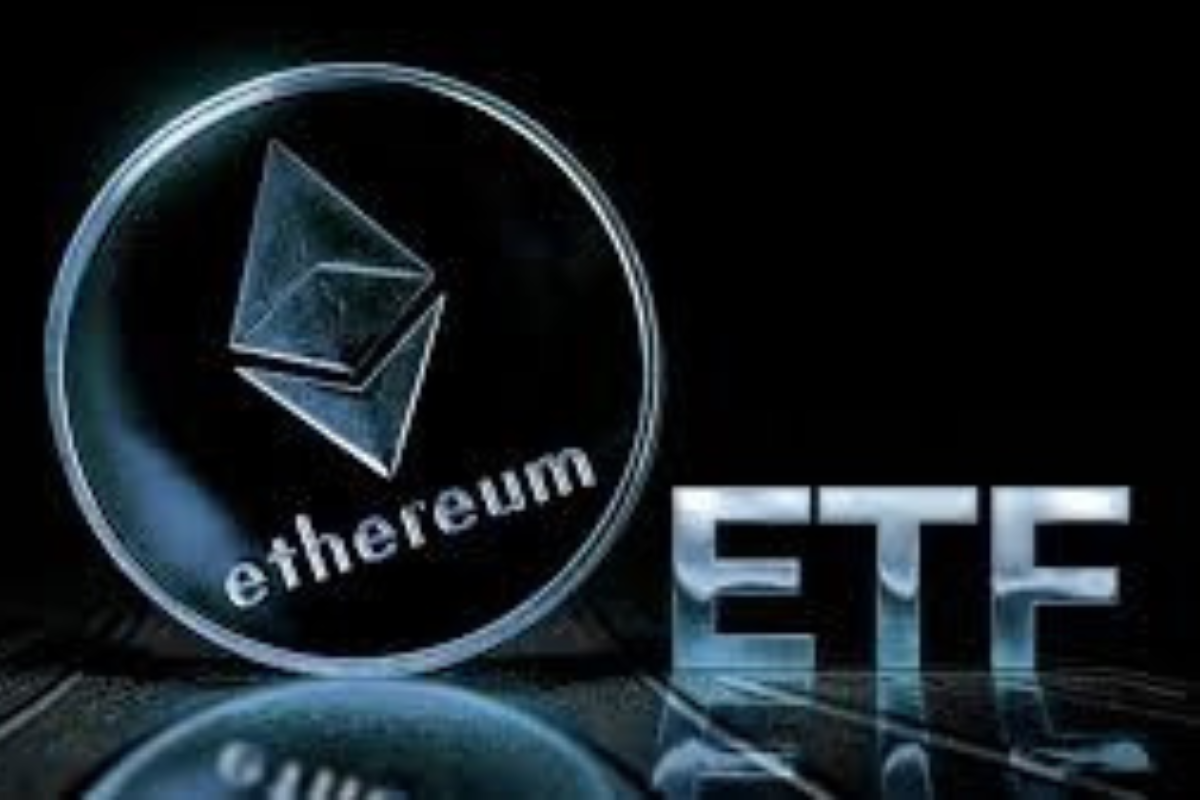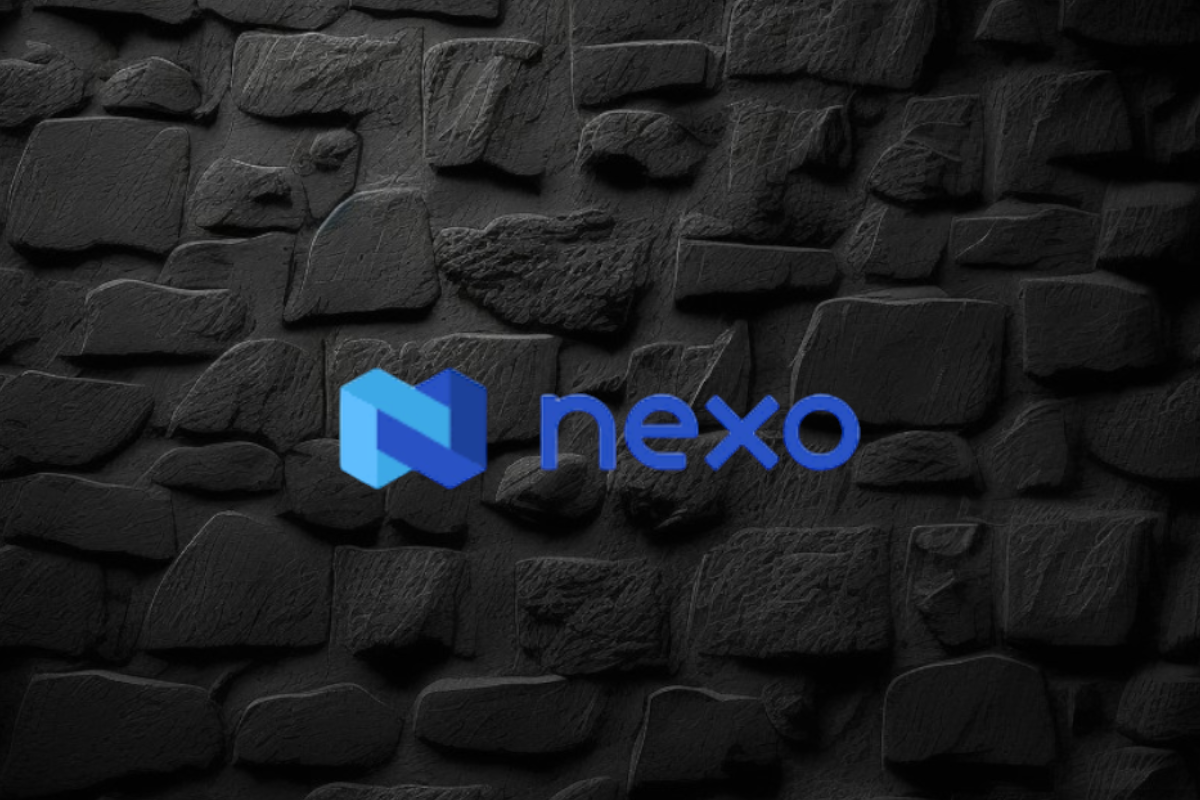Blockchain Press Releases
Bridging the Gap: Storage & Distribution in the Hydrogen Value Chain, IDTechEx Report

BOSTON, Aug. 15, 2023 /PRNewswire/ — In recent years, interest and activity in the hydrogen sector have accelerated, driven by governments recognizing hydrogen’s role in the energy transition and companies worldwide capitalizing on emerging market opportunities through the supply of services, products, technologies, and projects. While much focus has been placed on the upstream development of low-carbon hydrogen production sites (both green and blue) and downstream advancements in fuel cell technologies and industrial use cases of hydrogen, the midstream infrastructure needed to store and transport hydrogen has often received less consideration.
The development of this critical link in the value chain is vital for ensuring the full potential of hydrogen as an industrial feedstock, fuel, and energy carrier, bridging the gap between production and consumption. A broad spectrum of solutions exists for hydrogen transportation and storage.
This article delves into the subject of hydrogen storage and distribution technologies, examining their use cases and highlighting recent commercial activities in this domain. For a more in-depth exploration of each technology and associated commercial activities, please refer to IDTechEx’s new market report, “Hydrogen Economy 2023-2033: Production, Storage, Distribution & Applications“.
The Need for Hydrogen Storage & Distribution
Despite its impressive gravimetric energy density, one of the main challenges with hydrogen is the complexity of its storage and transportation. This stems from its extremely low density at ambient conditions leading to low volumetric energy density. Consequently, significant compression (100 to 700 bar) or liquefaction at an extreme boiling point of -253°C is necessary to enhance its volumetric energy density for storing and transporting adequate amounts.
Although mature, incumbent compressed gas and cryogenic liquid storage methods have significant disadvantages. These methods are energy-intensive, diminishing the hydrogen’s net energy content. Compression consumes 10-30% of the original energy, while liquefaction can use up to 30-40%, with the added burden of requiring a separate liquefaction plant, entailing considerable capital investment. Such inefficiencies significantly hinder some applications, such as FCEV mobility and energy storage, by sharply lowering the overall energy efficiency. Safety risks with compressed gas storage and boil-off issues with liquid H2 storage lead to hydrogen loss, further exacerbating the challenges. Collectively, these factors make both domestic and international transport of hydrogen expensive and inefficient.
Globally, hydrogen pipelines do exist, totaling an estimated 5,000 km, but their reach is largely restricted to specific regions like parts of Texas and Louisiana around the Gulf Coast or areas in France, Belgium, Netherlands, and Germany. Typically operated by industrial gas giants like Air Products, Linde, and Air Liquide, these pipelines serve industrial facilities such as refineries within a limited range of production sites. This confinement emphasizes the pressing need to expand pipeline networks to connect varying regions of production and consumption more widely.
Hydrogen Storage Options and Their Use Cases
Many solutions are available, but the optimal choice depends on storage size and application. Compressed gas and liquid hydrogen storage tanks will likely continue to serve stationary storage applications, such as hydrogen refueling stations. Liquid hydrogen spheres may be used to store large quantities at production sites and import/export terminals. Established players like Tenaris (compressed gas storage), Chart Industries (liquid H2 tanks), and McDermott CB&I (liquid H2 spherical vessels) already supply these well-commercialized solutions.
Compressed hydrogen tanks, especially Type III and IV composites are gaining traction in the FCEV market, as they are most suitable to store hydrogen on-board of a vehicle. Many FCEVs, such as the Hyundai Nexo and Toyota Mirai, use Type IV tanks storing hydrogen at 700 bar. Compressed storage is expected to persist in many FCEV segments, dominating light-duty ones. However, liquid hydrogen (LH2) tanks present the advantage of higher capacities, which could be beneficial for the heavy-duty segments. Hence, some companies, like Daimler Truck, are trialing the use of LH2.
Storage systems using metal hydrides show promise for stationary applications similar to existing compressed and liquid H2 systems. These systems, which operate at much lower pressures (10-50 bar) and use pressure cycling for adsorption/release, may be more suitable for hydrogen energy storage applications due to reduced energy consumption and, thus, improved round-trip efficiency. Companies like GKN Hydrogen are progressing towards commercialization, having demonstrated their systems in off-grid energy storage and residential combined heat and power (CHP). Many more companies are developing systems based on metal hydrides.
Underground hydrogen storage, utilizing reservoirs like salt caverns, builds on established natural gas storage methods. Integration of such facilities into hydrogen pipeline networks is planned by operators like Uniper and Gasunie in the coming years. Underground storage is expected to play a key role in seasonal hydrogen storage to supply sectors in times of lower demand, like natural gas storage. Underground facilities may also be used by industrial projects as a buffer reserve of hydrogen – HYBRIT, a sustainable steelmaking project in Sweden, is testing such a concept using a lined rock cavern (LRC). However, regulation and long project development times remain key challenges for this storage type.
Hydrogen Distribution Options and Their Use Cases
Currently, compressed and liquid hydrogen trailers supply smaller scale applications like refueling stations or pilot projects. This trend is likely to continue as large-scale transportation where continuous hydrogen supplies are needed may not be viable with these methods. Many types of vessels could be used in terms of compressed gas transport, from Type I to IV, developed by companies like Hexagon Purus. Other companies, such as LIFTE H2, are using trailer concepts to develop mobile refuelers, which can compensate for the lack of a hydrogen refueling station.
Larger scale and longer-distance transport will necessitate pipelines, either running directly from production to end-use sites or feeding into pipeline networks. New construction is planned, with some projects like the HyNet North West Hydrogen Pipeline already underway. Repurposing natural gas pipelines is a possibility but requires extensive simulation, testing, and risk evaluation to identify suitable pipelines. The European Hydrogen Backbone initiative is a leading initiative in terms of developing a large-scale pipeline network, with over 30 operators participating – many of the pipelines that will be used are planned to be repurposed from existing networks. Blending hydrogen into natural gas is also a popular topic as it is a way of partially decarbonizing the heating and power sector, with projects like HyDeploy proving a blend of 20 vol% being safe in existing pipelines. However, a higher percentage of hydrogen blends will require the modification of many appliances and equipment in the residential and industrial sectors.
International long-distance transport may involve liquid hydrogen or conversion to hydrogen carriers like ammonia or LOHC. Liquid hydrogen transport was demonstrated by the Suiso Frontier vessel (built by Kawasaki Heavy Industries) in the HESC project, transporting hydrogen from Australia to Japan. However, this pathway may be less viable compared to carriers due to the technical and commercial difficulties of dealing with liquid hydrogen.
The advantage of using hydrogen carriers is the utilization of existing transport routes and vessels, albeit requiring additional processing facilities. Companies like Chiyoda Corporation and Hydrogenious LOHC Technologies are on the path of commercializing their LOHC solutions. An ammonia receiving terminal is also planned at the Port of Rotterdam as a collaboration between Royal Vopak, Gasunie, and HES International. Many more companies globally are also seeing ammonia as the more viable option.
Future Directions & Further Insights
The global embrace of hydrogen storage and distribution technologies will expand as production and end-use sites increase. This represents an opportunity for product supply, project development, and R&D to innovate and refine existing methods. IDTechEx projects the global low-carbon hydrogen production market to reach US$130 billion by 2033, expecting substantial growth in transport and storage solutions. The new “Hydrogen Economy 2023-2033: Production, Storage, Distribution & Applications” report offers an exhaustive overview of the value chain, including technological analyses, comparisons, commercial activities, innovations, and market trends.
To find out more about this IDTechEx report, including downloadable sample pages, please visit www.IDTechEx.com/hydrogeneconomy.
About IDTechEx
IDTechEx guides your strategic business decisions through its Research, Subscription and Consultancy products, helping you profit from emerging technologies. For more information, contact [email protected] or visit www.IDTechEx.com.
Images download:
https://www.dropbox.com/scl/fo/26hm5khr119vvsusxrco1/h?rlkey=e9ij27nbhop08e1ndb2zfjxaa&dl=0
Media Contact:
Lucy Rogers
Sales and Marketing Administrator
[email protected]
+44(0)1223 812300
Social Media Links:
Twitter: www.twitter.com/IDTechEx
LinkedIn: www.linkedin.com/company/IDTechEx
Photo – https://mma.prnewswire.com/media/2184922/IDTechEx_Overview.jpg
Logo – https://mma.prnewswire.com/media/478371/IDTechEx_Logo.jpg

![]() View original content:https://www.prnewswire.co.uk/news-releases/bridging-the-gap-storage–distribution-in-the-hydrogen-value-chain-idtechex-report-301899685.html
View original content:https://www.prnewswire.co.uk/news-releases/bridging-the-gap-storage–distribution-in-the-hydrogen-value-chain-idtechex-report-301899685.html

Blockchain
Ethereum ETFs Aren’t Blockchain But Is A Revolutionary Tech: Top 6 Amazing Reasons To Invest In Them

The financial landscape is rapidly evolving, with the integration of blockchain technology and cryptocurrencies becoming more prominent. Among these, Ethereum ETFs (Exchange-Traded Funds) have emerged as a significant investment vehicle, offering exposure to the Ethereum blockchain’s native cryptocurrency, Ether (ETH), without requiring direct ownership. However, it’s crucial to understand that Ethereum ETFs are distinct from the blockchain itself and serve different purposes in the investment world.
Understanding Ethereum and ETFs
Ethereum: A decentralized platform that enables the creation and execution of smart contracts and decentralized applications (dApps). It operates using its cryptocurrency, Ether (ETH), which fuels the network.
ETF (Exchange-Traded Fund): A type of investment fund that holds a collection of assets and is traded on stock exchanges. ETFs can include various asset classes, such as stocks, commodities, or bonds.
Ethereum ETFs: The Intersection of Traditional Finance and Cryptocurrency
An Ethereum ETF provides a way for investors to gain exposure to the price movements of Ether without directly purchasing the cryptocurrency. This is achieved through an ETF structure, where the fund holds assets linked to the value of Ether, and investors can buy shares of the ETF on traditional stock exchanges.
Key Features of Ethereum ETFs:
- Indirect Exposure: Investors gain exposure to Ether’s price changes without needing to manage or store the cryptocurrency themselves.
- Regulatory Compliance: Unlike the relatively unregulated cryptocurrency market, ETFs operate under the oversight of financial regulators, offering a layer of investor protection.
- Accessibility: Ethereum ETFs are available through traditional brokerage platforms, making them accessible to a broader range of investors.
Why Invest in an Ethereum ETF?
- Diversification: Including an Ethereum ETF in a portfolio can provide exposure to the cryptocurrency market, potentially enhancing diversification beyond traditional assets.
- Convenience and Familiarity: ETFs are a familiar investment product, simplifying the process of investing in cryptocurrencies.
- Professional Management: ETF managers handle the investment decisions, including the buying and selling of assets, which can be advantageous for those less familiar with the cryptocurrency space.
- Regulatory Oversight: ETFs are subject to regulatory scrutiny, potentially offering more safety and transparency compared to direct cryptocurrency investments.
- Potential for Growth: As the cryptocurrency market grows, ETFs linked to assets like Ether may benefit from rising prices.
Key Differences Between Ethereum and Ethereum ETFs
While both are related to the Ethereum blockchain, Ethereum itself and Ethereum ETFs represent different forms of investment:
- Ethereum (ETH):
- Direct ownership of the cryptocurrency.
- Full exposure to Ethereum’s features, including staking and network participation.
- Traded on cryptocurrency exchanges.
- Highly volatile and largely unregulated.
- Ethereum ETF:
- Indirect exposure through shares representing Ether’s value.
- Traded on traditional stock exchanges under regulatory oversight.
- Offers a more stable and familiar investment structure.
- Typically lower volatility compared to direct cryptocurrency ownership.
Future Considerations for Ethereum ETFs
The approval and launch of Ethereum ETFs mark a significant milestone in bringing cryptocurrencies closer to mainstream finance. They offer a convenient and regulated means for investors to gain exposure to the growing digital assets market. However, they also come with limitations, such as not allowing direct participation in the Ethereum ecosystem’s innovations, like dApps and smart contracts.
As the market evolves, we may see more sophisticated financial products that better capture the full potential of the Ethereum ecosystem. For now, Ethereum ETFs provide a balanced option for those interested in cryptocurrency exposure within the framework of traditional finance.
In conclusion, while Ethereum ETFs offer a gateway into the world of digital assets, they should be viewed as complementary to, rather than a replacement for, direct investment in the underlying blockchain technologies. Investors should carefully consider their investment goals, risk tolerance, and the unique attributes of both Ethereum and Ethereum ETFs when making investment decisions.
Source: blockchainmagazine.net
The post Ethereum ETFs Aren’t Blockchain But Is A Revolutionary Tech: Top 6 Amazing Reasons To Invest In Them appeared first on HIPTHER Alerts.
Blockchain
Nexo Reaffirms Commitment to Data Protection with SOC 3 and SOC 2 Compliance

Nexo, a leading institution in the digital assets industry, has reinforced its commitment to data security by renewing its SOC 2 Type 2 audit and attaining a new SOC 3 Type 2 assessment without any exceptions. This rigorous audit process, conducted by A-LIGN, a respected independent auditor specializing in security compliance, confirms Nexo’s adherence to stringent Trust Service Criteria for Security and Confidentiality.
Key Achievements and Certifications
- SOC 2 and SOC 3 Compliance:
- SOC 2 Type 2: This audit evaluates and reports on the effectiveness of an organization’s controls over data security, particularly focusing on the confidentiality, integrity, and availability of systems and data.
- SOC 3 Type 2: This public-facing report provides a summary of SOC 2 findings, offering assurance to customers and stakeholders about the robustness of Nexo’s data security practices.
- Additional Trust Service Criteria:
- Nexo expanded the scope of these audits to include Confidentiality, showcasing a deep commitment to protecting user data.
- Security Certifications:
- The company also adheres to the CCSS Level 3 Cryptocurrency Security Standard, and holds ISO 27001, ISO 27017, and ISO 27018 certifications, awarded by RINA. These certifications are benchmarks for security management and data privacy.
- CSA STAR Level 1 Certification:
- This certification demonstrates Nexo’s adherence to best practices in cloud security, further solidifying its position as a trusted partner in the digital assets sector.
Impact on Customers and Industry Standards
Nexo’s rigorous approach to data protection and compliance sets a high standard in the digital assets industry. By achieving these certifications, Nexo provides its over 7 million users across more than 200 jurisdictions with confidence in the security of their data. These achievements not only emphasize the company’s dedication to maintaining top-tier security standards but also highlight its proactive stance in fostering trust and transparency in digital asset management.
Nexo’s Broader Mission
As a premier institution for digital assets, Nexo offers a comprehensive suite of services, including advanced trading solutions, liquidity aggregation, and tax-efficient credit lines backed by digital assets. Since its inception, the company has processed over $130 billion, showcasing its significant impact and reliability in the global market.
In summary, Nexo’s successful completion of SOC 2 and SOC 3 audits, along with its comprehensive suite of certifications, underscores its commitment to the highest standards of data security and operational integrity. This dedication positions Nexo as a leader in the digital assets space, offering unparalleled security and peace of mind to its users.
Source: blockchainreporter.net
The post Nexo Reaffirms Commitment to Data Protection with SOC 3 and SOC 2 Compliance appeared first on HIPTHER Alerts.
Blockchain
Marshall Becomes First US Senator to Walk from Controversial Crypto Bill He Co-Sponsored

Republican Senator Roger Marshall has withdrawn his support for the Digital Asset Anti-Money Laundering Act of 2023, a controversial bill he initially co-sponsored with Senator Elizabeth Warren and others. This bill, reintroduced in the Senate on July 27, 2023, aimed to bring the cryptocurrency industry into alignment with existing anti-money laundering (AML) and counter-terrorism financing (CTF) laws.
Key Provisions of the Bill
The legislation proposed stringent regulations on digital asset providers, including unhosted wallet providers, miners, and validators, by classifying them as financial institutions under the Bank Secrecy Act (BSA). It mandated these entities to adhere to BSA compliance requirements, which include extensive reporting and monitoring responsibilities. Additionally, the bill called for the Financial Crimes Enforcement Network (FinCEN) to establish regulations for reporting significant foreign digital asset holdings and to create compliance measures to address risks associated with anonymity-enhancing technologies.
Senator Marshall’s Shift
Marshall’s withdrawal from the bill comes as a surprise, particularly given his earlier criticisms of cryptocurrencies, which he has described as a “threat to national security.” This includes concerns over stablecoins like Tether potentially facilitating illegal activities and circumventing U.S. sanctions. Despite his earlier stance, Marshall’s departure from the legislation suggests a reconsideration of the bill’s implications or an alignment with broader political and industry perspectives on cryptocurrency regulation. His office has not provided a comment on the reasons for his withdrawal.
Political and Industry Reactions
The bill had garnered significant bipartisan support, with 18 co-sponsors, reflecting a broader concern in Congress over regulating the rapidly growing cryptocurrency market. However, it has also faced criticism for potentially imposing impractical compliance burdens that could stifle innovation and push crypto activities offshore. Critics argue that the bill’s stringent requirements could inadvertently drive users toward unregulated platforms, thereby undermining its intent to enhance security and regulatory oversight.
Broader Context
The withdrawal comes at a time when cryptocurrency regulation is a highly contentious issue in U.S. politics. Former President Donald Trump has promised to relax crypto regulations if elected, contrasting with the current administration’s more stringent stance. Under President Joe Biden, the Securities and Exchange Commission (SEC) and other regulatory bodies, led by figures like Gary Gensler, have taken a more rigorous approach to regulating the sector, which has drawn criticism for being overly restrictive.
Senator Marshall’s decision to step back from the Digital Asset Anti-Money Laundering Act reflects the complex and evolving nature of cryptocurrency regulation in the U.S. While the bill seeks to bring greater oversight and security to the crypto industry, it also raises concerns about regulatory overreach and its potential negative impact on innovation and privacy. As the debate continues, the U.S. legislative and regulatory landscape for cryptocurrencies remains in flux, balancing the need for security with the desire to foster technological innovation.
Source: decrypt.co
The post Marshall Becomes First US Senator to Walk from Controversial Crypto Bill He Co-Sponsored appeared first on HIPTHER Alerts.
-

 Blockchain5 days ago
Blockchain5 days agoBinance Cleared to Invest Customer Assets in US Treasury Bills: What It Means for Crypto and Dollar Dominance
-

 Blockchain5 days ago
Blockchain5 days agoDeep Custodian Limited Obtains Hong Kong TCSP License, Authorized to Provide Compliant Crypto Asset Custody Services
-

 Blockchain Press Releases2 days ago
Blockchain Press Releases2 days agoBybit Web3 Livestream Explores Cultural Meme Coins and Other Trends
-

 Blockchain Press Releases2 days ago
Blockchain Press Releases2 days agoBybit Surges to Second Place in Derivatives Market, Solidifying Position as Global Crypto Trading Leader
-

 Blockchain3 days ago
Blockchain3 days agoBlockchain Intelligence Group adds additional modules and launches its Certified Cryptocurrency Investigator – Advanced Series
-

 Blockchain2 days ago
Blockchain2 days agoKevin O ‘Leary Addresses Crypto Investing, Ethereum ETFs, and SEC Chair in Recent Interview
-

 Blockchain4 days ago
Blockchain4 days agoBitAngels Network Hosts Blockchain Pitch Competition in Nashville
-

 Blockchain4 days ago
Blockchain4 days agoCoinW Continues Expedition Trek And Double Down On Presence At ETH-Native Events































